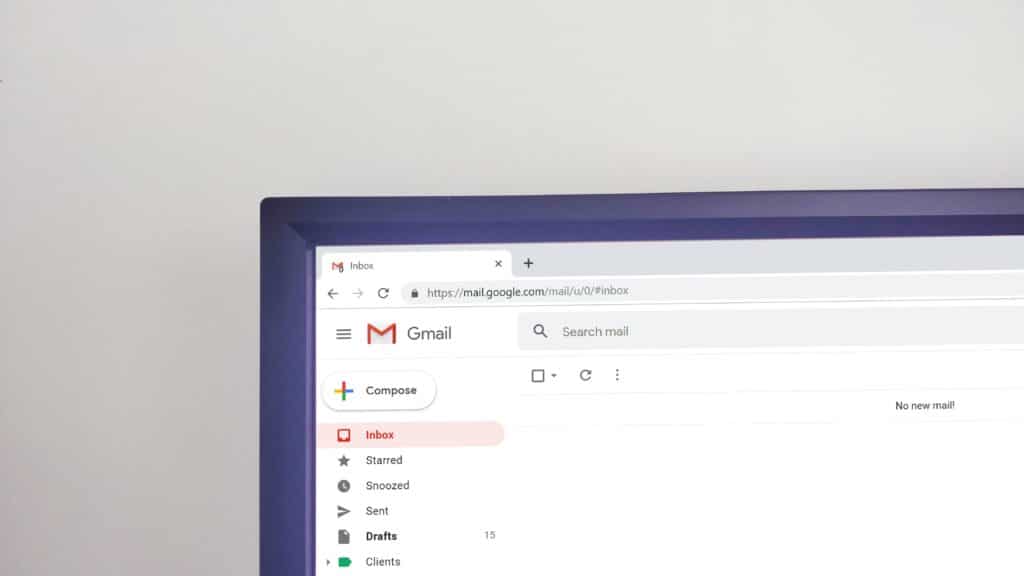Top 10 B2B Contact List Mistakes to Avoid

Jump to a section
Subscribe to our newsletter to get guides sent directly to your inbox!
Don't forget to share this post!
As we navigate the digital jungle of B2B connections, having a reliable B2B contact list is crucial for the success of any business. Having a well-maintained list of potential clients and business partners is a game-changer, opening doors to new opportunities and increased revenue. However, there are common mistakes that many businesses make when it comes to managing their B2B contact lists.
In this article, we will explore the top 10 mistakes to avoid and provide you with valuable insights to optimize your contact list strategy.
The Impact of Inaccurate B2B Contact Information
One of the biggest mistakes businesses make is relying on inaccurate contact information. Imagine reaching out to a potential client, only to discover that the email address or phone number you have is incorrect. Not only does this waste your time and effort, but it also damages your reputation. Inaccurate contact information can lead to missed opportunities and lost business.
To avoid this mistake, it is vital to regularly verify and update your contact information. Double-check email addresses, phone numbers, and company details before reaching out. Consider using data validation tools or hiring a professional service to ensure the accuracy of your B2B contact list.
Furthermore, inaccurate contact information can also impact your marketing campaigns. Sending emails to incorrect addresses not only decreases your email deliverability rates but can also harm your sender reputation. This can result in your emails being marked as spam or not reaching your intended recipients at all. Inaccurate phone numbers can lead to failed telemarketing campaigns, wasting resources and potentially annoying customers with repeated calls to wrong numbers.
Another consequence of relying on inaccurate B2B contact information is the missed opportunity for valuable feedback and insights. When your contact information is incorrect, you may miss out on important communication from clients or prospects. This feedback could provide you with valuable information about your products or services, customer satisfaction levels, or potential areas for improvement. By ensuring the accuracy of your contact information, you can maintain open lines of communication and gather crucial feedback to help grow your business.
The Role of Data Quality in B2B Contact List Management
Data quality is a critical factor in effective B2B contact list management. When your data contains errors, duplicates, or outdated information, it hinders your ability to connect with potential clients. Poor data quality can result in wasted resources, decreased productivity, and missed opportunities.

Photo by Krsto Jevtic on Unsplash
To maintain data quality, establish a set of data standards and protocols for your organization. Regularly clean and update your contact list, removing duplicate entries and correcting errors. Consider investing in a data management system that provides automated checks and updates to ensure the accuracy and completeness of your B2B contact information.
In addition to cleaning and updating your contact list, it is essential to regularly validate the information to ensure its relevance and accuracy. Implementing a verification process can help in confirming the authenticity of the contact details, such as email addresses and phone numbers, reducing the chances of reaching out to non-existent or incorrect contacts. By validating your B2B contact list, you can enhance the effectiveness of your marketing campaigns and improve overall engagement with your target audience.
Furthermore, data quality goes beyond just accuracy; it also encompasses factors like consistency and relevance. Consistent data formatting and categorization across your contact list can streamline your marketing efforts and improve segmentation for targeted campaigns. Ensuring the relevance of the data involves regularly reviewing and updating customer preferences and information to align with current market trends and customer needs. By maintaining high standards of data quality in your B2B contact list, you can establish stronger relationships with clients and drive better business outcomes.
Best Practices for Updating Your B2B Contact List Regularly
Updating your B2B contact list regularly is crucial for staying relevant and maximizing its effectiveness. Outdated information can lead to missed connections and lost business opportunities. It is essential to establish a systematic process for updating your contact list to ensure it remains current and reliable.
Firstly, regularly review and remove outdated contacts from your list. Identify contacts that have not responded to your communications or have changed their roles within their organizations. This step is vital as maintaining a clean and updated contact list can significantly improve your email deliverability rates and overall engagement metrics.
Secondly, encourage your contacts to update their information by providing user-friendly forms or surveys. Consider offering incentives for updating details, such as exclusive content or discounts on your products or services. By making the process beneficial for your contacts, you are more likely to receive accurate and timely updates to their information.
Thirdly, leverage automation tools to systematically update your contact information from reliable sources such as LinkedIn or industry-specific directories. Automation can help streamline the process of keeping your contact list current, saving you time and ensuring accuracy. Additionally, consider implementing regular data hygiene practices, such as deduplication and data validation, to maintain the quality of your contact list.
Common Mistakes When Purchasing B2B Contact Lists
Many businesses make the mistake of purchasing B2B contact lists without proper due diligence. While purchasing a list can save time and effort, it can also lead to wasted resources and negative outcomes if not done correctly.
First and foremost, ensure that you are purchasing your contact list from a reputable source. Research the provider, read reviews, and ask for referrals from trusted colleagues. Secondly, make sure that the contact list aligns with your target audience and industry. A generic list may reach a broad audience but may lack relevancy for your specific business needs.
Avoid purchasing outdated lists that have been overused or recycled multiple times. Finally, be cautious of lists that offer unrealistic numbers or promise guaranteed results. Remember, quality is more important than quantity when it comes to B2B contact lists.
Moreover, when considering purchasing a B2B contact list, it’s essential to understand the regulations surrounding data privacy and protection. Ensure that the provider complies with data protection laws such as GDPR or CCPA, depending on your location and the location of the contacts in the list. Non-compliance can lead to severe legal consequences and damage to your company’s reputation.
Another critical factor to consider is the segmentation and customization options offered by the contact list provider. A well-curated list that allows you to target specific demographics, industries, or job titles can significantly increase the effectiveness of your marketing campaigns. Don’t settle for a one-size-fits-all approach when personalized lists can yield higher engagement and conversion rates.
Measuring the Success of Your B2B Contact List Strategy
One of the common mistakes businesses make is neglecting to measure the success of their B2B contact list strategy. Without proper evaluation, it is challenging to identify areas for improvement and understand the return on investment (ROI) of your efforts.
Start by establishing clear goals and key performance indicators (KPIs) for your contact list strategy. Monitor metrics such as email open rates, click-through rates, conversion rates, and new client acquisitions. Analyze the data to identify trends, patterns, and areas of improvement.
Regularly assess the quality and relevance of your contacts. Are they the right fit for your business? Are they actively engaging with your communications? Continuously fine-tune your strategy based on the insights gained from measuring your B2B contact list’s success.
By avoiding these common mistakes and following best practices, you can optimize your B2B contact list strategy and drive meaningful business results. Keep in mind that managing a contact list is an ongoing effort that requires constant attention and adaptation. With a well-maintained and accurate contact list, your business can forge stronger relationships, generate more leads, and achieve sustainable growth.
Furthermore, consider segmenting your contact list based on various criteria such as industry, company size, or engagement level. This targeted approach allows for personalized communication that resonates with different segments of your audience, ultimately leading to higher conversion rates and stronger customer relationships.
Another important aspect to consider is the frequency of communication with your contacts. Striking the right balance between staying top-of-mind and avoiding overwhelming your audience is crucial. Utilize marketing automation tools to schedule emails at optimal times and ensure consistent engagement without bombarding your contacts.
Conclusion
Remember, the success of your B2B contact list strategy is not solely dependent on the size of your list but rather on the quality of the relationships you build and nurture over time. By continuously evaluating and refining your approach, you can position your business for sustained growth and success in the competitive B2B landscape.
Featured Image by Austin Distel on Unsplash
Get started with a sample
We run a free sample for all of our potential customers to ensure that we can find the data that you need. It’s super simple to set up and you'll have the results in 3-5 working days…